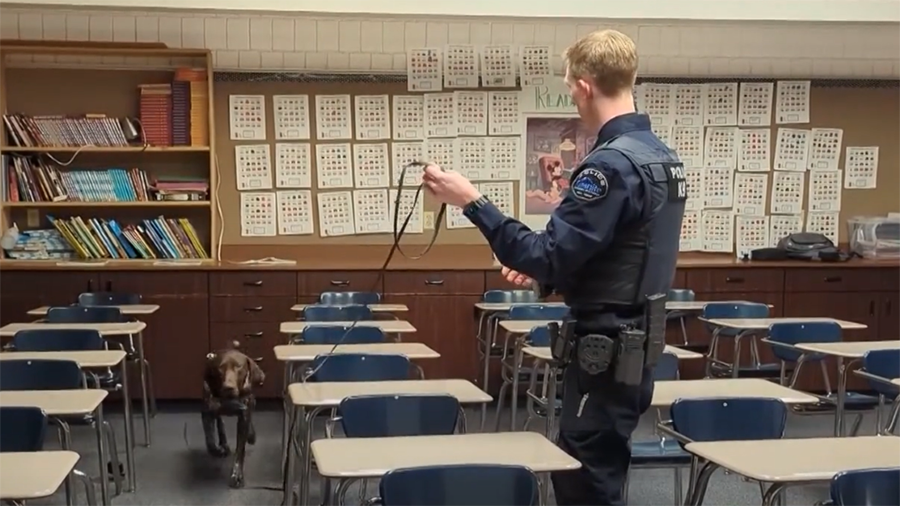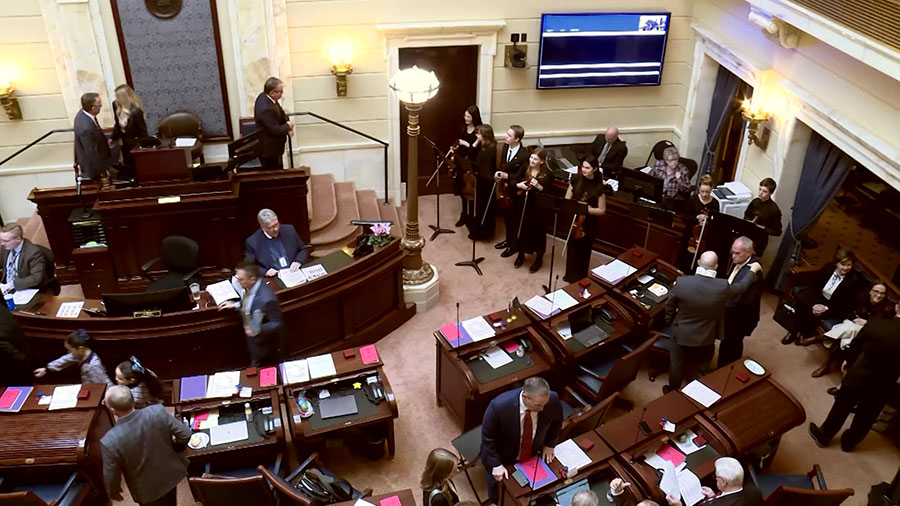KSL+: A deeper look at “Where Are the Workers?”
Oct 8, 2021, 1:35 PM
Restaurant Worker: Everyone right now that is working with us, they are doing everything. Yeah.
Matt Rascon: This week on KSL+, if you’ve been out at all recently, you’ve probably seen restaurants closed for lunch? We’ve talked about this quite a bit on KSL+, the labor shortage coming out of COVID. It’s just been so busy, and they can’t keep up. Now the question is, where did all these workers go? That’s everybody’s question.
Mark Knold: The demand instantly went back to pre-COVID levels. Labor doesn’t move that quickly. It’s very frictional, very sticky in terms of takes a while for people to make decisions that come back to the labor force, to change skill sets, and so on. And so you ended up with what is a very large labor gap. One of the largest I’ve ever seen. Now, that’s not to say there isn’t bodies that could fill these jobs. And I do believe given time, they will. But the rapidness, in which the economy opened up just created this large labor camp.
Matt Rascon: That is Mark Knold, the chief economist at the Department of Workforce Services. My colleague, Deanie Wimmer, spoke to him and several others for story this week called “Where are the workers?” and Deanie is with us now. I want to start with the problem that sort of prompted all this, I’ve covered stories on this, you know, others of our colleagues have as well. How bad is the labor shortage in the service industry?
Deanie Wimmer: Right now, we can probably see it ourselves. You go to a restaurant you see Help Wanted signs everywhere, there are empty tables, but you can’t get it seated in the restaurant. That’s because there’s not enough help. Restaurants are closing, for lunch, they’re closing certain days of the week, because they just can’t hire enough workers. You’ve seen it in stores. You know, now that it’s on my radar, I’m seeing it everywhere I go.
Matt Rascon: Business is back. Of course. I mean, it’s sort of booming back this service industry, people are going out quite a bit now. But in many cases, workers are not and we hear about, you know, their suspicions about what they are doing, or maybe they’re just living off their stimulus checks and unemployment money. But it seems like the debt the data that you found doesn’t support that.
Deanie Wimmer: That’s true. It just wasn’t there. The labor force moved on to other things.
Workforce Services shows that the unemployment, ongoing unemployment is the same now, almost as it was before the pandemic. There are approximately 16,000 people who didn’t come back from COVID, into the workforce in Utah, that could account for a lot of things. Workers who just decided they don’t want to have two dual incomes in a household, it’s not worth it to work. Maybe they have health issues, and they can’t return to work amid a pandemic. And so really our unemployment is second lowest in the country. And we they just say there aren’t a lot of people who are home working that want to work, earn home living off stimulus checks that want to work.
Matt Rascon: Right? Yeah. Well, that brings us to the main question then if they’re not at home, living off stimulus checks, where are where are these workers? Where do they actually go?
Deanie Wimmer: They are going by 10s of 1000s to new jobs in industries that allow for more flexibility that allow for better control of your schedule, better life balance. For instance, there were 20,000 Utahns that moved into the business sector, professional business, it’s accounting, IT, tech, those sorts of industries. You see 17,000 in the last year that went to things like warehouse work, transportation and trade. Thousands went to construction. You’re seeing decreases in retail, in communication, in government work, and you’re seeing new jobs in a lot of those sectors. But you can directly trace the growth in those industries by the 10s of 1000s in the last year of those workers who are just they are looking for different kinds of jobs that are less physical that are more flexible, those kinds of things.
Matt Rascon: Yeah, and that’s what I was gonna ask, what were the reasons but is it that flexibility? I mean, is the pay?
Deanie Wimmer: I imagine a host of reasons but largely you see in surveys that upwards of 70% of people they want flexibility now they had a taste of it during the pandemic if your job allowed for it, and if it didn’t, when you stay at home you realize you know what am I working a low wage job for and missing all this time with my family? You know, the three things that seem to be the key for driving workers is higher pay, is flexibility, and is the ability to have a more controlled life schedule.
Matt Rascon: One of the things that was interesting that you brought up in in the story was this group, Utah Tech Moms, people who seem to have capitalized on realizing that there are a lot of people that want to have different work, more flexibility. Can you talk a bit about that program that they’ve started?
Deanie Wimmer: Yeah, there’s a huge demand for tech workers and for tech skills. And so this organization, Utah Tech Moms, has been they’ve been holding workshops in Ogden, Lehi, Layton. And every Saturday, they’ll get a cohort of women, and they train them and for a few weeks, these women can have marketable skills. And I talked to multiple women who went through that program. Before the program, they were working in the service industry, they many of them worked tough jobs, weekends, holidays, graveyards, they all wanted a better schedule, and most of them made more money, at least dependable money, once they got jobs, and they did get jobs in that business tech industry,
Matt Rascon: So what about the service industry? I mean, when I when I covered a couple of these stories a few weeks ago, couple of months ago, we were talking about you know, they’re paying more to for their food that they’re selling, they’re paying, having to pay more to their workers to incentivize more people to work for them. And we of course, are seeing the impact as well,
Deanie Wimmer: We’re gonna pay the price. You know, this, the service industry and hospitality is really the sector that is suffering right now, the workers were chased away during COVID, because you can’t offer flexibility and hybrid or work from home options in a lot of cases. And so there are companies and advisors that are telling industries or businesses in those industries, there are things you maybe can do to keep your employees or to attract employees, one of them is to pay more, one of them is to try to consider paying for travel, you know, now that workers have had the chance to stay at home, would you be willing to pay workers a per diem to travel from home or offer flexibility when you can thinking out of the box when you schedule? And a lot of the times you hear anecdotally to the whole tipping, the whole tipping system that we have is hard for workers because they can’t depend on their pay. And so, you know, some studies, they started to reevaluate that whole system, because they can’t keep employees that want to know what they’re going to be able to count on when it comes to a budget.
Matt Rascon: Well, we know there’s a problem. You mentioned a few of the things that companies are doing, is there anything else that that you that you heard from the Department of Workforce Services or others about the solution here, and how we kind of go forward?
Deanie Wimmer: I mean, for workers, obviously, they have more choices. And so businesses need to try to do what they can to treat workers well. This is a workers market. These are the kinds of environments that will take slow moving long term trends and turn them into something real quick.
And a lot of the times there have been cases where it was it was an employer’s market. But now companies need to do what they can to help workers establish that work life balance, whether it’s providing childcare, whether it is providing educational benefits, whether it’s providing better health care or flexibility where you can. Companies are going to have to start thinking flexibly and out of the box in terms of how they’ve done things up until now and offering more money. Money is not the end all but it is important to a lot of people because Workforce Services says this isn’t a flash in the pan these are workers aren’t coming back, they have found new jobs and moved on. And so they’re gonna have to find a way to bring in money and new workers that are willing to do those jobs.
Matt Rascon: I think it’s worth noting as we’re doing this, this segment that all three of us here, you, myself, and Shelby, our producer, we’re all at home right now. Right? Right, which wouldn’t have happened before the pandemic,
Deanie Wimmer: You will learn new ways to do things, right. And we’ve gotten used to, you know, I mean, before, people would have thought this was inferior quality, you know that the video quality is not acceptable. But you get used to new ways of doing things, and you find more efficient ways of doing things. And so I think, as industries learn to do that, you find new ways to do business. That’s helpful. And I think we would all agree, I don’t want to speak for you, Matt. But I think we would agree it’s given us some flexibility to that is important and helpful. You don’t have to rush to work to accomplish every meeting or everything you need. One other thing I will say is that, for teenagers, this is a great time because you can find work for good pay, if you’re willing to go help in some of those first time, you know, service industry and hospitality jobs.
Matt Rascon: Well, you had you had, I think, three minutes or so to put this story on air, we always like to, you know, see if there’s anything else that didn’t get on air that we haven’t covered already, that you feel like would be important to mention for this story, as we’re talking about, where are these workers?
Deanie Wimmer: One thing that I found interesting and I didn’t have time to include it was Susan Madsen with Utah State University has done a lot of research in women and industries, women in business, and what she did one of the largest surveys in the country, in terms of how COVID impacted women, and the burnout, the dissatisfaction, the shift in mindset as to what women are willing to do and the reevaluating of, of whether working, you know, these part time jobs or these jobs that they don’t love is worth the sacrifice at home in their family is real. And you’re seeing those numbers. They saw those numbers and believe that there are going to be some real shifts in in women in the workforce because of those kinds of things.
Matt Rascon: Okay, you can find Deanie’s story on KSLtv.com, Where are the workers? Deanie, thanks a lot for your time. Appreciate it.
Deanie Wimmer: Thanks for the opportunity.
Matt Rascon: That does it for us this week here on KSL+, I’m Matt Rascon. And we’ll see you again next week.












